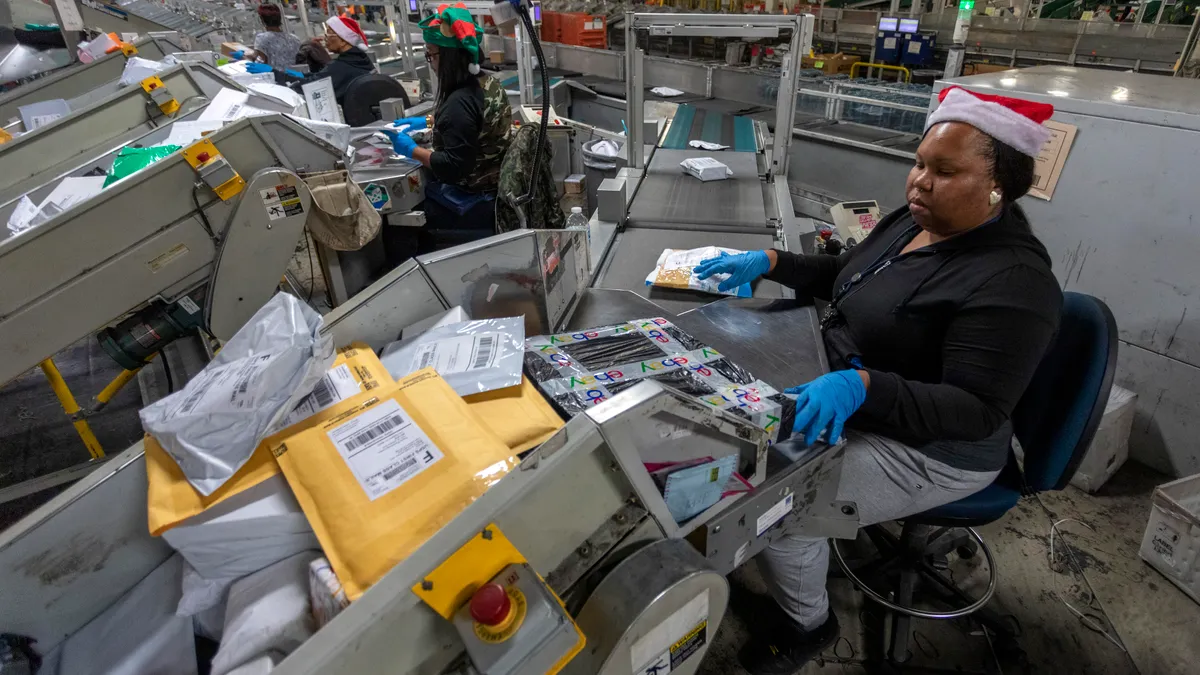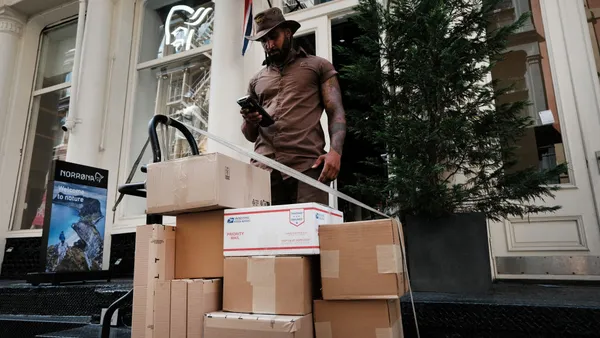Dive Brief:
- The U.S. Postal Service's top package delivery offerings fell short of their on-time performance targets during the 2023 peak holiday shipping season, according to a report last week from the agency's Office of Inspector General.
- While package volume increased from the 2022 peak season, on-time scores for the agency's Priority Mail and Ground Advantage services fell year over year. The report redacted information on the extent of the decline.
- The Postal Service said "operational changes, severe weather, and unanticipated facility closures" impacted its performance, per an agency response included in the report. However, it added that the claim by the OIG of worse service "disregards the changes to the way service scores were calculated.”
Dive Insight:
With the 2024 peak season fast approaching, the OIG’s report provides a deeper glimpse into how the USPS fared during the holidays last year. The agency couldn’t control for some of its service struggles, such as an ice storm in the northern U.S., but it had a direct hand in others, per the report.
For example, the OIG noted certain processing facilities struggled to clear mail fast enough for designated delivery times, including a regional processing and distribution center in Richmond, Virginia. The facility launched in July 2023 as part of the Postal Service's 10-year "Delivering for America" plan, which aims to consolidate existing operations into larger facilities for cost savings.
More volume came into the Richmond facility than the Postal Service could handle, eventually resulting in mail being diverted to locations in New Jersey, Pennsylvania, North Carolina and Washington, D.C.
"The service challenges occurred, in part, because the Postal Service did not adequately plan and establish new transportation routes to support operations at the Richmond RPDC," the report said. "In addition, they operated with planned reductions in resources and had changes in transportation operations that resulted in first mile failures."
The report also noted instances of delayed inventory in processing plants increased more than 23% versus the prior peak season, impacting the Postal Service’s packages category the hardest. That issue didn’t always mean end customers experienced shipping delays, however.
"Delayed inventory includes pieces that remained on hand at a facility that have not received their next expected processing operation by 7 a.m. for destinating final processing operations and 6 a.m. for all other operations," the report said.
Although the OIG said service performance faltered, it added that the Postal Service did meet other peak season goals.
For example, the agency processed packages more efficiently during the 2023 peak season than it did in 2022, in part by leaning more on sortation machines. The number of parcels handled through manual operations fell by 23.6%, and 16.9% fewer work hours were required in those operations.
For the 2024 peak season, the OIG said the Postal Service should work "early and often" with new air shipping provider UPS and ground transportation suppliers to plan routes. Additionally, the agency should monitor the performance of new facilities it has opened since last year, as that "will be critical to avoid potential challenges with the upcoming peak season deliveries."













